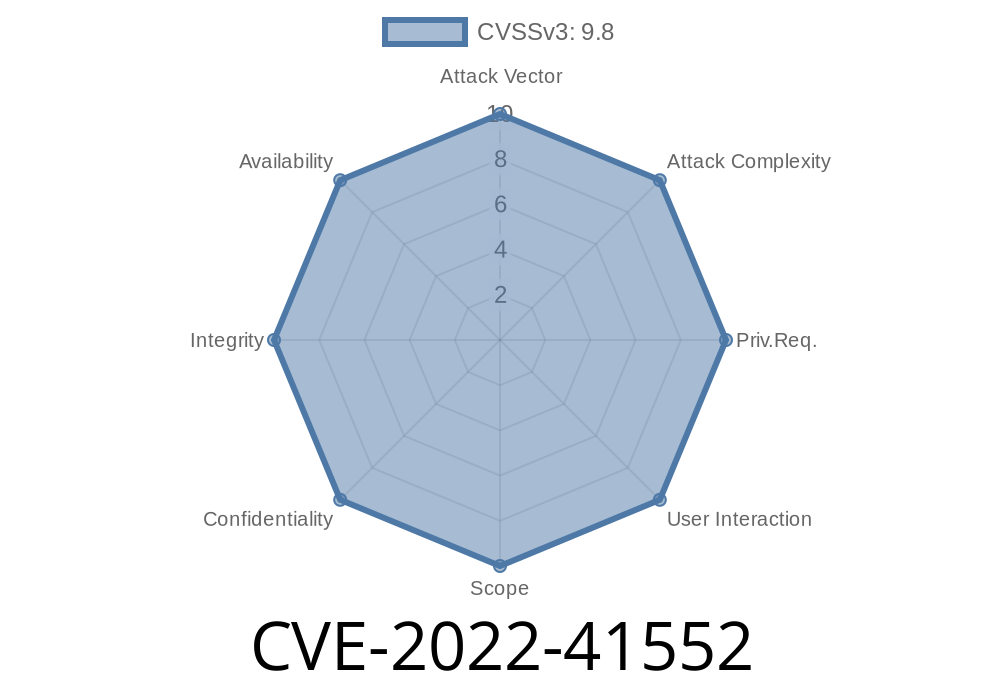Summary: A Server-Side Request Forgery (SSRF) vulnerability has been discovered in Hitachi Infrastructure Analytics Advisor and Hitachi Ops Center Analyzer on Linux platforms. In this post, we will delve into the details of this vulnerability, explain its potential impact, and share references and resources for further understanding.
Introduction
Publicly announced and assigned with the CVE number CVE-2022-41552, this vulnerability affects the following products:
Hitachi Ops Center Analyzer: versions from 10..-00 through 10.9.-00
It is critical to understand the scope and potential consequences of this vulnerability to ensure the security of your organization's infrastructure.
Vulnerability Details
The vulnerability, a Server-Side Request Forgery (SSRF), stems from inadequate input validation and error handling, allowing an attacker to perform malicious requests to an internal server from the targeted system. In this case, the affected Hitachi products fail to properly verify the incoming requests, enabling an SSRF attack.
An SSRF attack can have severe consequences, including unauthorized data access, application/service disruption, and even remote code execution in some scenarios.
Affected Components
The vulnerability affects the following components in Hitachi Infrastructure Analytics Advisor and Hitachi Ops Center Analyzer on Linux platforms:
Exploiting the Vulnerability
To demonstrate the vulnerability, let's take a look at a code snippet that illustrates a typical SSRF attack:
import requests
# The URL of the vulnerable application
VULNERABLE_URL = 'https://example.com';
# The target internal server's URL
INTERNAL_SERVER_URL = 'http://internal.example.com/';
# The malicious payload
payload = {
'url': INTERNAL_SERVER_URL,
}
# Perform the SSRF request
response = requests.post(VULNERABLE_URL, data=payload)
# Print the response
print(response.text)
In this example, an attacker sends a malicious request to the vulnerable application, which in turn forwards the request to the internal server. If the input validation and error handling are not implemented correctly, the attacker can access the internal server's data or cause disruptions.
For further information on CVE-2022-41552, visit the following resources
- NVD - National Vulnerability Database: CVE-2022-41552 Detail
- Vulnerability Notes Database - CERT/CC: VU#140561
- Hitachi Product Security Information: CVE List
Conclusion
The CVE-2022-41552 vulnerability exposes Hitachi Infrastructure Analytics Advisor and Hitachi Ops Center Analyzer to SSRF attacks. Organizations utilizing these products on their Linux platforms should promptly apply patches to mitigate the risk. Staying informed of the latest vulnerabilities and taking appropriate action is crucial for maintaining a secure and compliant IT infrastructure.
Timeline
Published on: 11/01/2022 03:15:00 UTC
Last modified on: 03/01/2023 15:43:00 UTC
